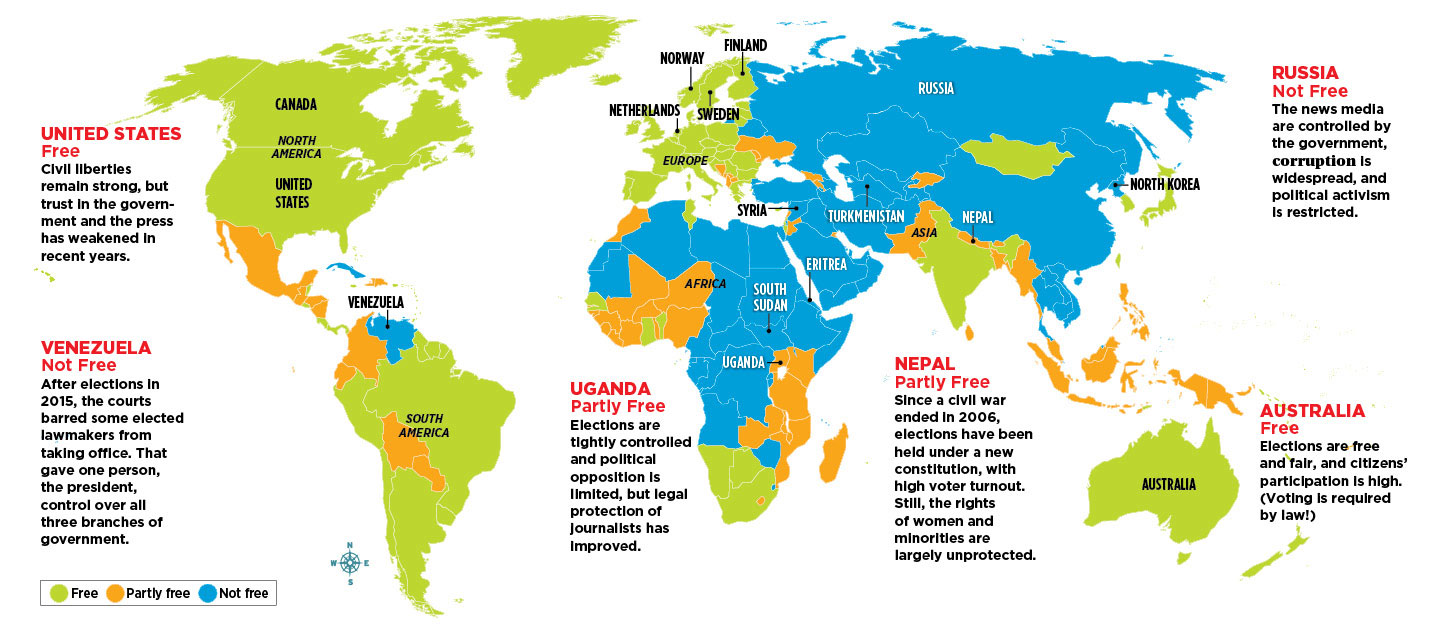“It’s a free country!” You’ve probably heard that remark countless times. But have you ever thought about what “a free country” really means?
Freedom is the ability to act, speak, or think without restrictions. When it comes to countries and societies, freedom usually has to do with three types of legal freedoms people can have: political, social, and economic. Political freedom includes the right to vote and participate in government. Social freedom includes the right to free speech, free exercise of religion, and equal treatment under the law. Economic freedom includes being able to earn a living, choose and change jobs, and own property.

